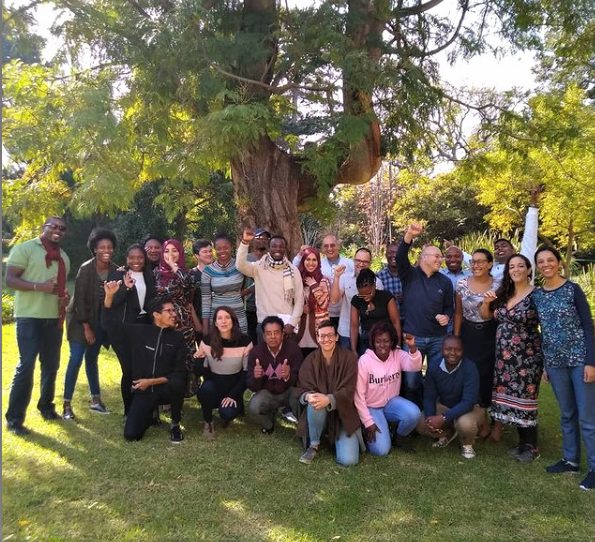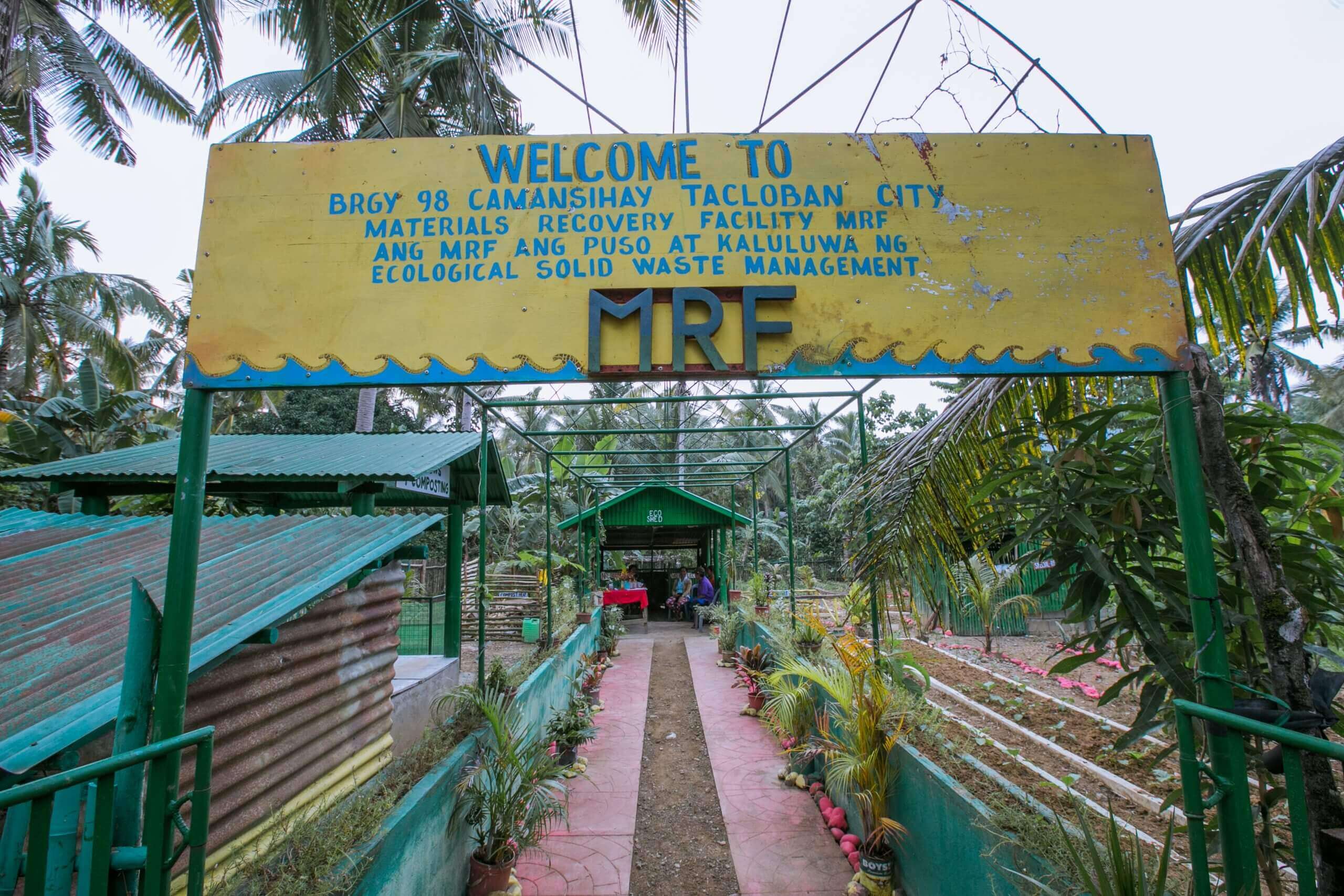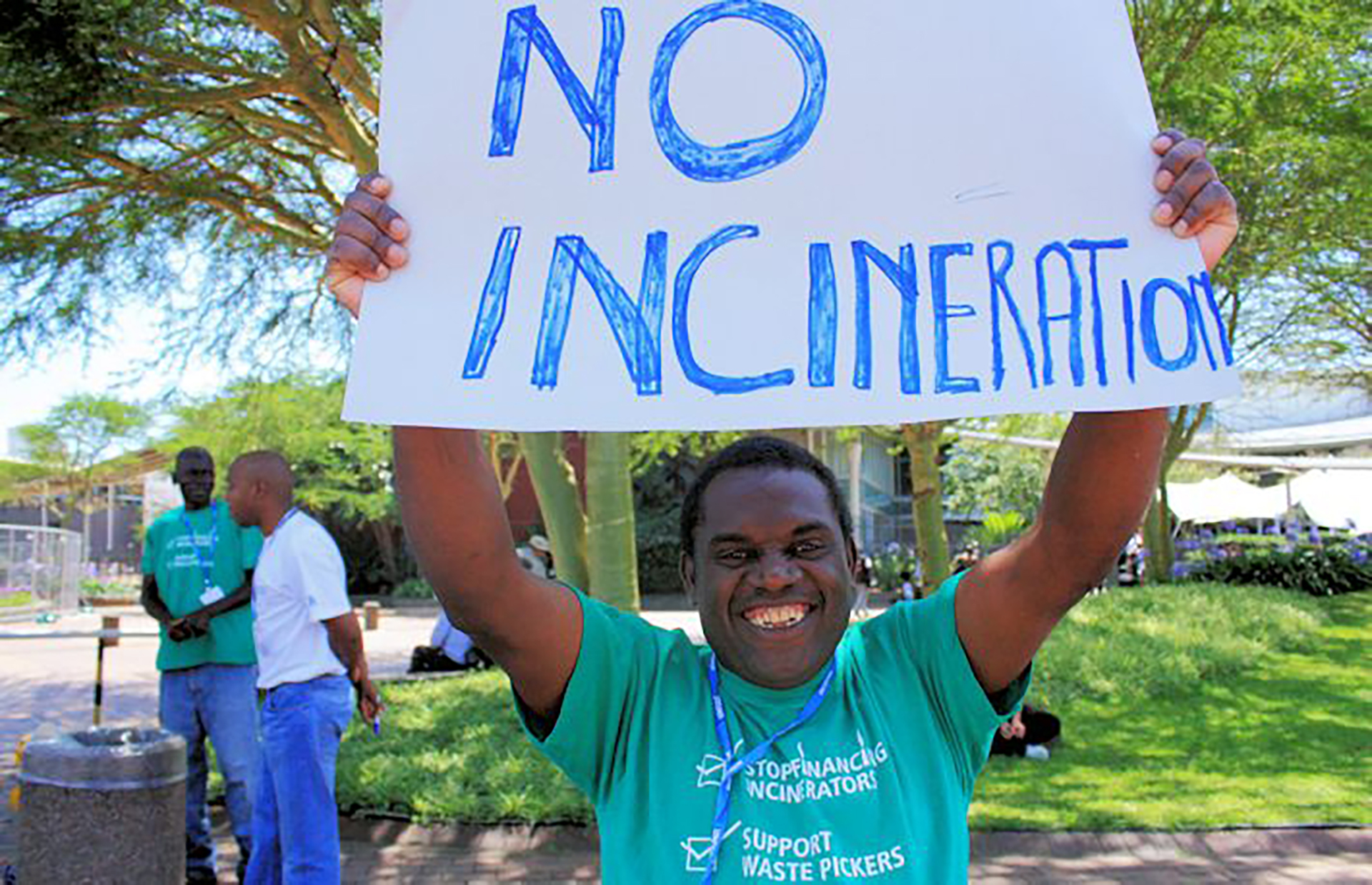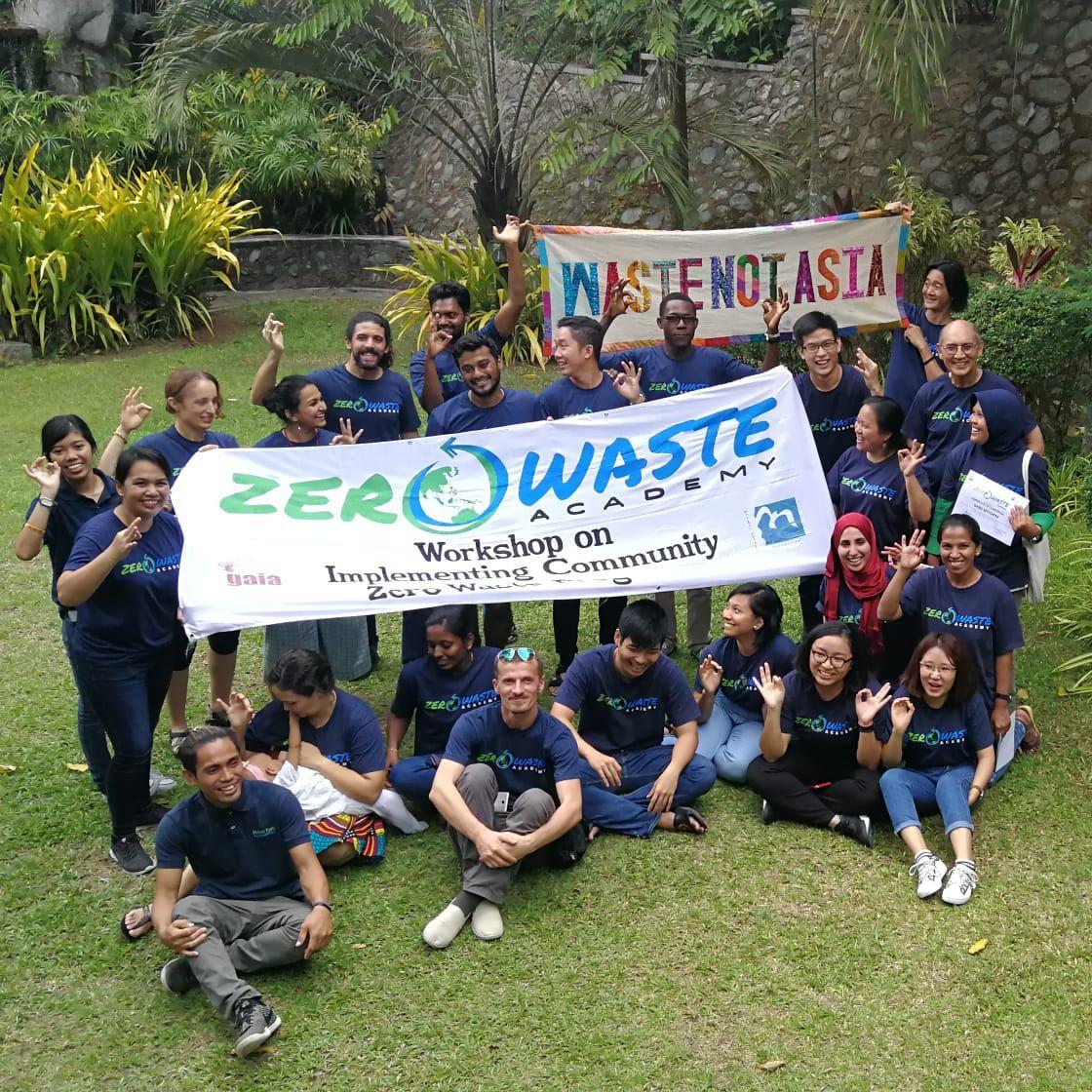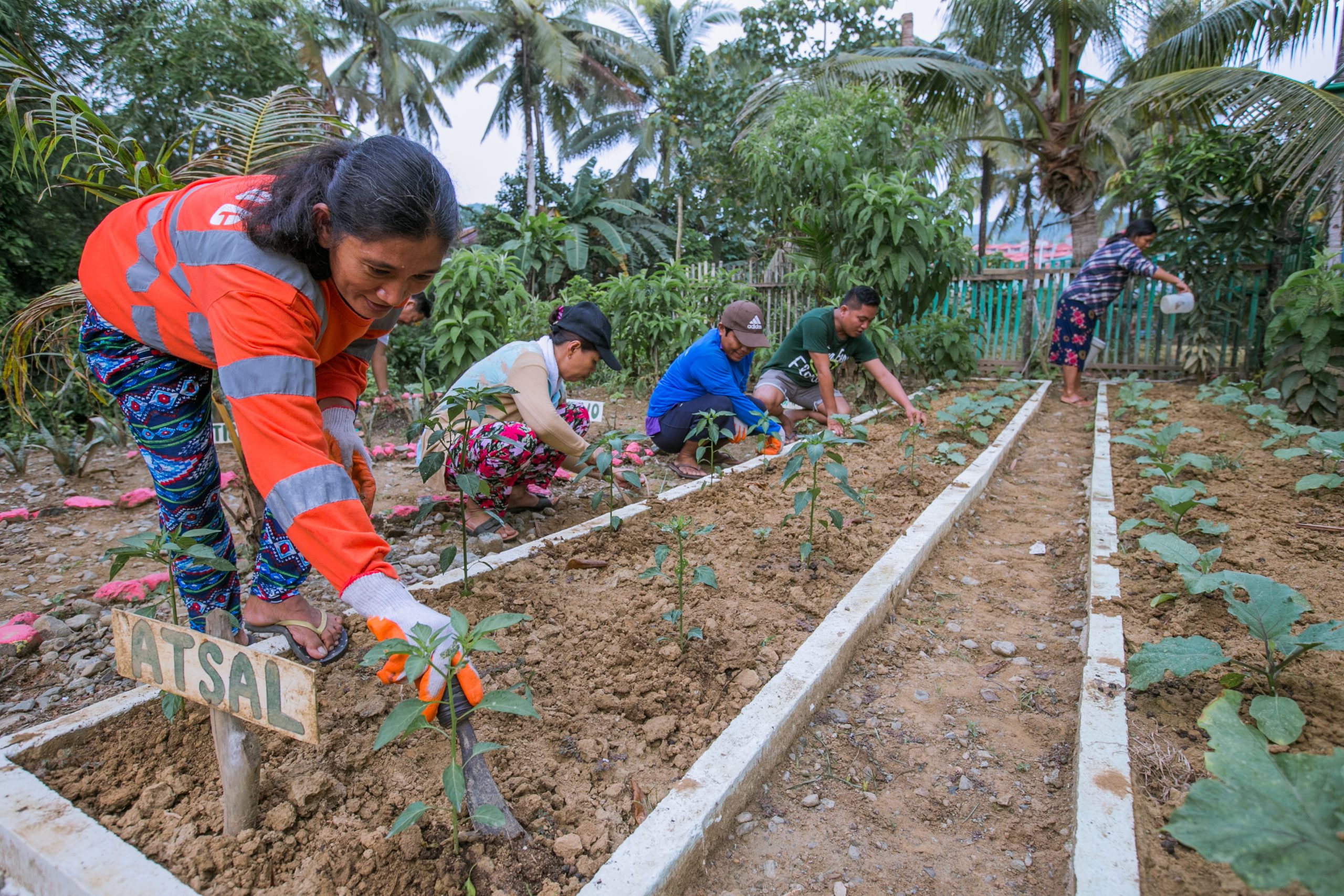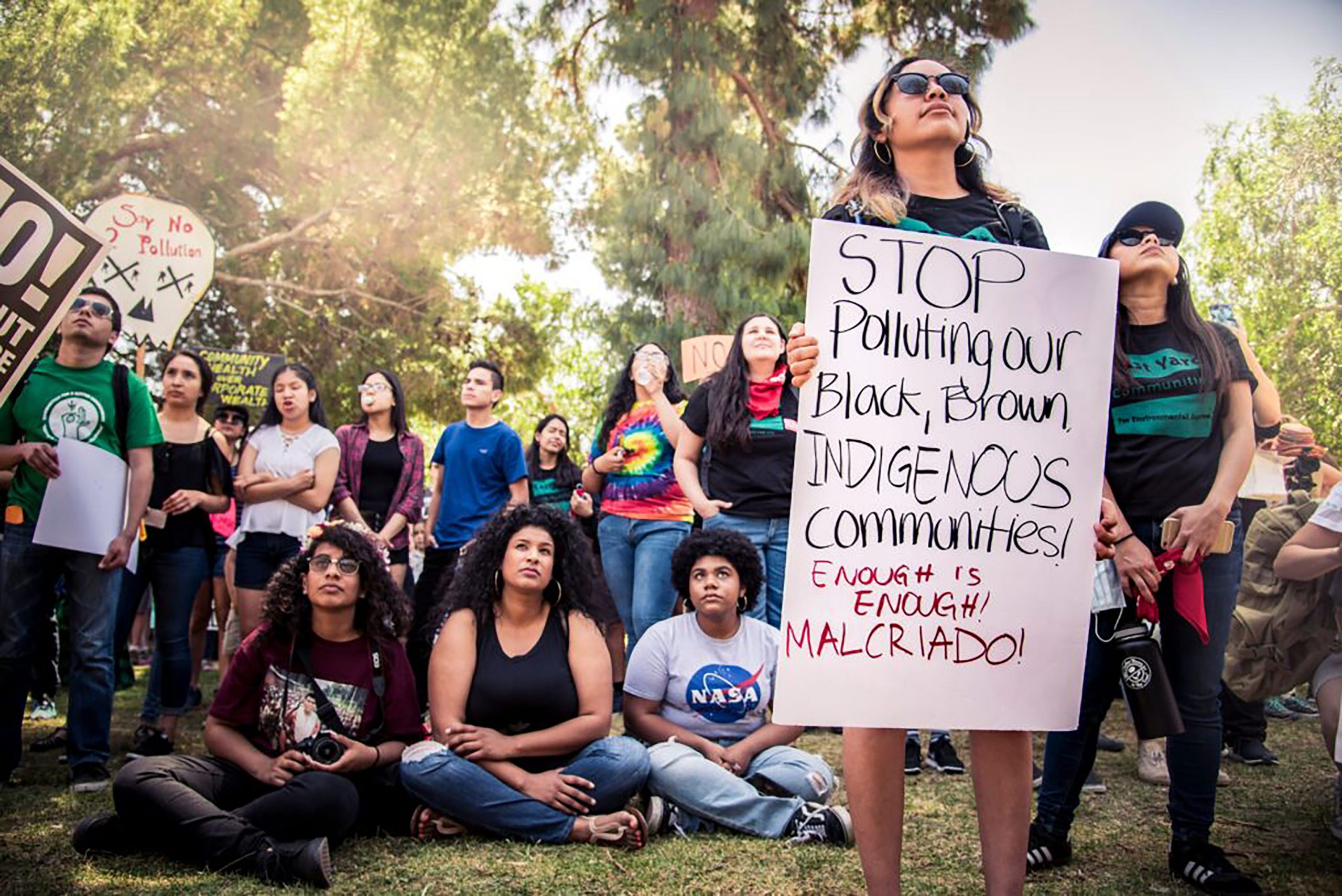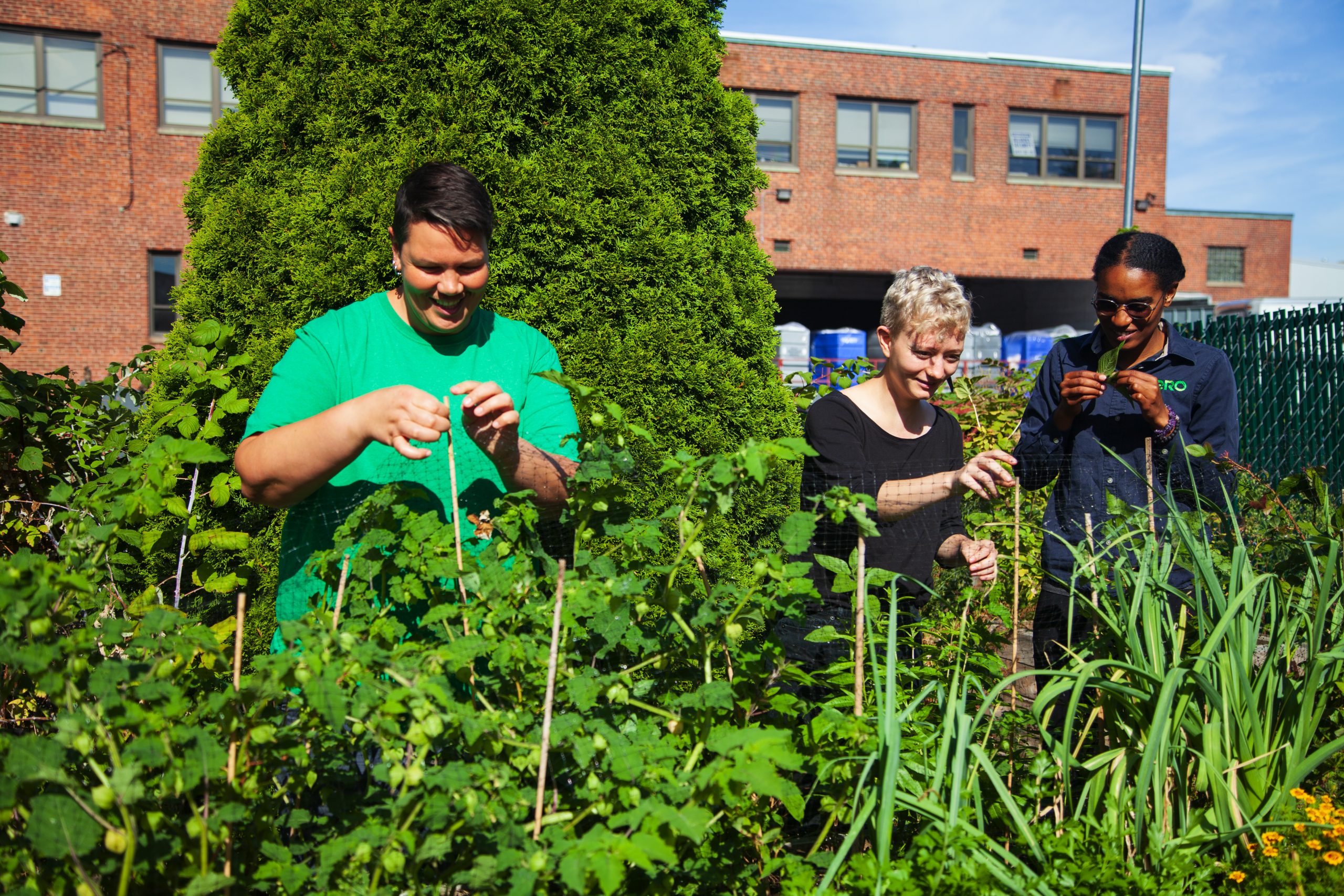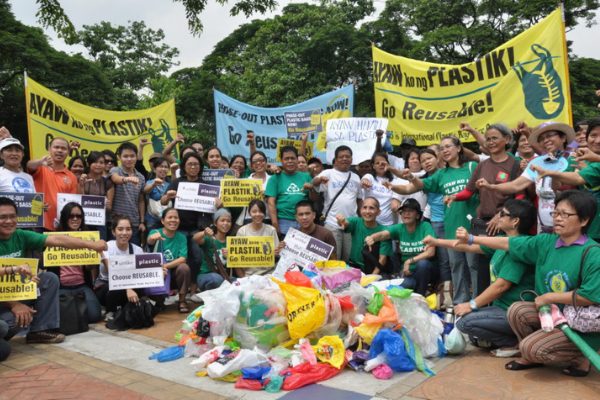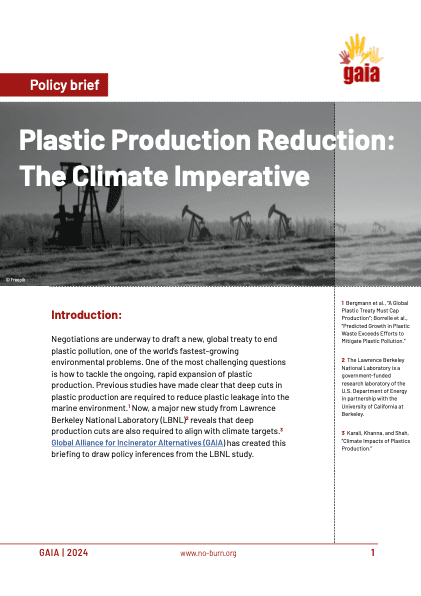By Sherma E Benosa
“I’ve already got loads of things to do, and you also want me to segregate my waste?” The man, perhaps in his mid-60s, sounded and looked annoyed. We asked him to segregate their waste before giving them to the waste collector next time.
“It’s only difficult in the beginning, ‘Tay,” our group leader, Shelley Carbonel, one of the Program Managers of Mother Earth Foundation, replied in a calm voice. “When you get used to doing it, it will be easier,” she added, her hands busy segregating the man’s waste for him.
Still, the man continued complaining, at one point blaming the government for the dirty surroundings. I looked over at Shelley and admired her cool. At the time, I was already exasperated. I know the man’s outbursts were getting to my groupmates as well. But like me, they were trying their best to look unaffected.
Earlier that day, we overheard a husband, perhaps in his early 50s, telling his wife, “Let them do it” when the latter asked him if he had segregated their waste. By “them,” he meant us, thinking we were garbage collectors. We were in fact a group LGU and environmental NGO representatives participating in an 11-day course on Implementing Community Zero Waste Program dubbed Zero Waste Academy.

Hearing the husband’s response, my face immediately flushed, my ears refusing to believe I heard him right. Seriously, he couldn’t expect other people to segregate their waste for them, no?
But the husband meant it, as he did not budge when Shelley offered to show him how to segregate their waste so that they would know how to do it next time. The wife showed some interest. She even called a child, aged about 9 or 10 years, from inside their house to watch us segregate their waste. “So you’d learn,” she told the child.
“All you need to do is immediately put your waste in the correct bins. Waste segregation only becomes hard if you mix the garbage first and then segregate later,” Shelley continued talking calmly, her gloved hands segregating the waste into recyclable, food waste, garden waste, residuals, special waste, and other categories. She was being helped by some of my fellow participants and the barangay counselor (village leader), Orlando Pedro, who joined us that day. But long before we finished working on their waste, the wife and the child had gone back inside, leaving us right outside their door.
I felt slighted. You don’t leave people outside your door just like that! I looked over at my companions, all visibly tired, but trying to stay in high spirit. It did not help that the Manila weather was too hot—34°C, but felt like 40°C. It was humid too. It was only 10am in the morning, but I was already feeling like I was going to faint anytime.
Then I looked at the barangay counselor. He was already drenched in his sweat. But like Shelley, he too was working quietly, looking unaffected despite having witnessed the attitude of some of his constituents. I wondered what he really really felt inside, and what thoughts were running in his mind.
When they finished segregating, I picked up some of the sacks with segregated garbage and moved them to the next house. As I walked, sacks in hand and the husband’s words still ringing in my ears, I wondered about the other group, whose members included international participants. Were they meeting resistance as well? How were they dealing with it?

This was the toughest part of the course. We were at Day 9, doing step 7 of the MEF 10 Steps to Establishing Community Zero Waste Program. The step is Dry-Run and Evaluation of Systems.
Ran by Mother Earth Foundation (MEF) and the Global Alliance for Incinerator Alternatives (GAIA) where I work as Communication Officer for Asia Pacific, the course is an intensive workshop comprising hands-on activities and interaction with communities, complemented with orientations and discussions on relevant issues such as waste-to-energy technologies and healthcare waste, and skill-share on organic waste management techniques.
For this workshop, MEF phased the implementation of their ongoing Zero Waste program in select barangays in Malabon City, Philippines to make the workshop activities coincide with implementation schedules, thus allowing us to observe and take part in the actual implementation of each step on the ground.
Before embarking on our first community exposure, we were forewarned that there will be challenges and difficult people.
“We cannot tell you what exactly will happen once you go to the communities because what you will be experiencing there will be the real thing,” Froilan Grate, MEF President and GAIA Asia Pacific Regional Coordinator, warned us.
Being forewarned does not remove the sting when you’re at the receiving end of unpleasant attitude. But it does make you automatically shift to ‘maximum tolerance mode’ and allow you to not be too affected.
The good thing was that our community experience was not always this bad. In fact, it was generally great. On Days 2 and 3, we did barangay profiling and baselining where we talked to barangay officials about their implementation of the ecological solid waste in their barangay. We talked about systems that are in place and the challenges they meet in implementing the law. The Philippines has a law on ecological solid waste management which decentralizes municipal solid waste management down to the barangay level.

On Day 4, we did random survey, where we talked to households about how they manage their waste, and what they thought about strict implementation of waste segregation as provided for by law. On Day 5, we did waste collection for the waste assessment and brand audit (WABA). And on Day 8, prior to the Dry Run, we did house-to-house information education campaign (IEC).
All these activities presented challenges. The hot weather was among the constants. But we were never met with any issue. In fact, we had a lot of fun. During the survey, Theeban Gunasekaran, a participant from the Consumers Association of Penang (Malaysia), gamely tried to do the survey using the local language, as the survey questionnaire was both in English and Tagalog/Filipino. He found reading the local language easy, as Tagalog and Bahasa Indonesia/Malaysia have a lot of similar words.
During the IEC, after we have watched how the MEF staff would conduct it, I asked the foreign delegates in our group if they’d want to do it in the local language. “I could write the script for you,” I offered them.
Theeban and Suseela Nagappan (also from CAP) readily said yes. Darwin Annadurai (Consumers Action Group, India), on the other hand, preferred to do it in English.
I watched the locals as they listened to the “Tagalog-speaking” foreigners, taking note of their nods and facial expressions to know if they understood what was being said to them. It looked to me that not only the foreigners but also the locals were enjoying the experience.
Then on Day 7, we built demo-composting techniques at the MRF in Fort Bonifacio, Taguig City. This was in lieu of the actual building of MRF, which is step 5 of the MEF 10 Steps. None of the barangays had already identified a place to put an MRF, so we instead created composting setups. This was to be the legacy of our batch.

We were divided into three groups. Group 1, consisted of Filipinos and Indonesians, introduced the katakura composting, which is ideal for home use. My group (Group 2), which consisted of Filipinos, Malaysians, and our sole Indian participant, chose to showcase vermi-wash, an innovation introduced to the group by the delegates from CAP. Group 3, which is an all-Filipino group, chose to build box composting unit, which is ideal for community use.
The preparation for the construction of the demo techniques revealed a funny side of the participants: competitiveness. Each group wanted to shine, and we all had fun trying to outdo one another. But whereas we were competitive, we were also supportive of each other, wanting the others to succeed as well. Thus, everyone was always ready to provide support to the others whenever needed.
Everyone shared their expertise, too, which made the workshop even richer. CAP participants shared their amazing work on organics management. Tini Tapran of GSSI Indonesia, talked about biopori, a composting technique which doubles as flood control. Fictor Ferdinand of YPBB talked about using black soldier fly to manage kitchen waste. Darwin shared his knowledge on solar composting technique.

Merci Ferrer, who used to work as Executive Director of Health Care Without Harm and is co-founder of War on Waste Dumaguete (Philippines), talked about managing health care waste. Ochie Tolentino of Eco-Waste Coalition, shared her experiences in fighting incinerators.
Another challenging part of the course was the waste assessment and brand audit (WABA), which we did on Day 11—the last day of the workshop. We were supposed to leave for Malabon early, but it rained the previous night, and it was still raining the morning we were scheduled to do it. The situation had us very concerned, because Malabon is a flood-prone area. Fortunately, the rains eventually abated.
Maricon Alvarez, Program Manager of MEF in charge of the whole Academy, had to look for another barangay where we could do the WABA because the original location was flooded. Luckily, they were able to find a good place, and after a few minutes’ delay, we were given the go signal to travel to Malabon.
The actual conduct of WABA was overwhelming. There were many categories into which we were to segregate the waste. Recyclables, for example, were to be segregated into hard plastic, PET bottle, bottle cover, paper, carton, and many other categories. Residuals were to be segregated into packaging, plastic bags, styro, and other categories. Plastic packaging was further segregated according to brand for the brand audit. At first it was confusing, then we got the hang of it. Later on, it was a mix of hard work and a bit of play to make things lighter.
Then, as we concluded the WABA, we too concluded the workshop.
I remember, sometime near the end of the course, on Day 10, Froilan asked us: “Do you think Malabon could become Zero Waste?”
Immediately, the scenes of the past days played in my mind in rapid succession: the old man, the indifferent husband, the people who seemed to have resigned to their house standing on a flooded estero (waterway) filled with garbage, and their indifference to their waste. It would require hard work, my mind answered.

But then I also thought of the people who were cooperative, those who segregated their waste as they were taught. I also thought of the community organizations on the ground who were helping in the barangays, and of course the cooperative barangay officials. Then my mind centered on Counselor Pedro who, at the end of that difficult Day 9, told the group as we evaluated and reflected on our experience: “Some people were uncooperative, but many were. So I think… there is hope. We can make our barangay Zero Waste!”
I remembered his words taking me by surprise. If I couldn’t say I already admired him as he worked silently alongside Shelley, I have to say he earned my respect just for choosing to look at the positive rather than the negative. By that gesture alone, he effectively made us feel much better, and made us realize that we can do things if we are determined enough.
Then I thought of the MEF staff, especially the community organizers, and their dedication to their cause. I know for a fact that rain or shine, they would do their best to make things work.

“Kaya ba? Is it possible?” Again, I heard Froilan’s voice.
I looked around and saw everyone’s smiling faces. I smiled, too, to no one in particular, and together with my fellow participants, we chorused: “Yeeesss!”
Froilan nodded his head, visibly pleased. Maybe like me, he too heard the conviction in our voices.
—-
Sherma E. Benosa is the communications officer of GAIA for Asia Pacific.
